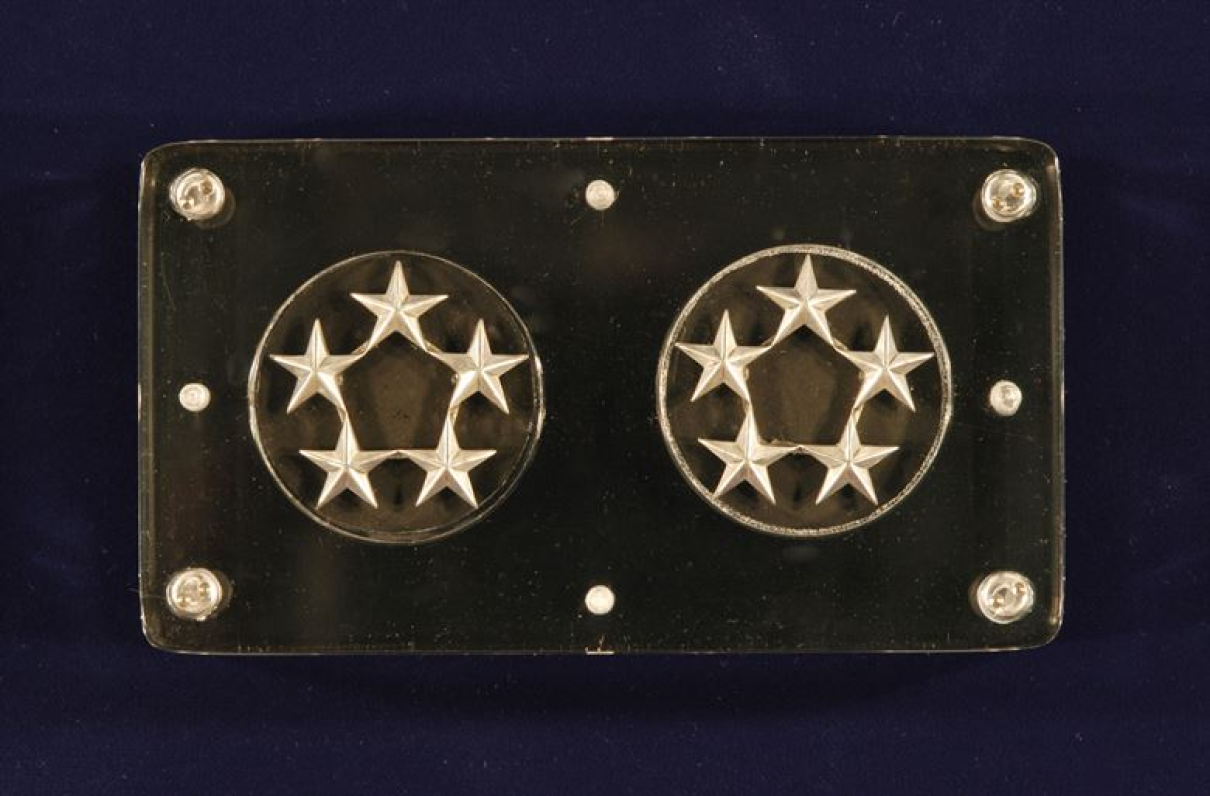Only nine officers in U.S. military history have been (or will be) promoted to five-star rank. The rank was established in 1944, to maintain the hierarchy between American commanders in World War II and foreign military leaders under their command. It was retired in 1981 at the death of the last surviving officer, Gen. Omar Bradley.
Seven officers received their fifth star on consecutive days in December 1944: Adms. William D. Leahy, Ernest King, and Chester Nimitz, and Gens. George Marshall, Douglas MacArthur, Dwight Eisenhower, and Henry H. “Hap” Arnold.
Adm. William “Bull” Halsey Jr. received his fifth star a year later, in December 1945, while Bradley received his in 1950. Arnold became general of the Air Force in 1949, giving that service its only five-star leader.
As five-star officers, these men did not retire, but remained on active duty for the rest of their lives. Marshall later served as secretary of state (1947-49) and secretary of defense (1950-51). He received the Nobel Peace Prize in 1953 for his namesake Marshall Plan to rebuild Western Europe.
Eisenhower became the 34th president of the U.S. While most presidents can list military service on their résumé, Eisenhower is one of only a dozen generals who have occupied the White House, and the only president in the last 100 years to have been a career soldier. Among his legacies is the Interstate Highway System.
Only three officers in American military history are considered to outrank these five-stars: Adm. George Dewey and Gen. John Pershing (No. 1) both were promoted above four-star rank, in 1903 and 1919, respectively, and are understood to have seniority over later five-star officers. Gen. George Washington was permanently declared senior to all other U.S. officers during the bicentennial celebrations of 1976.
